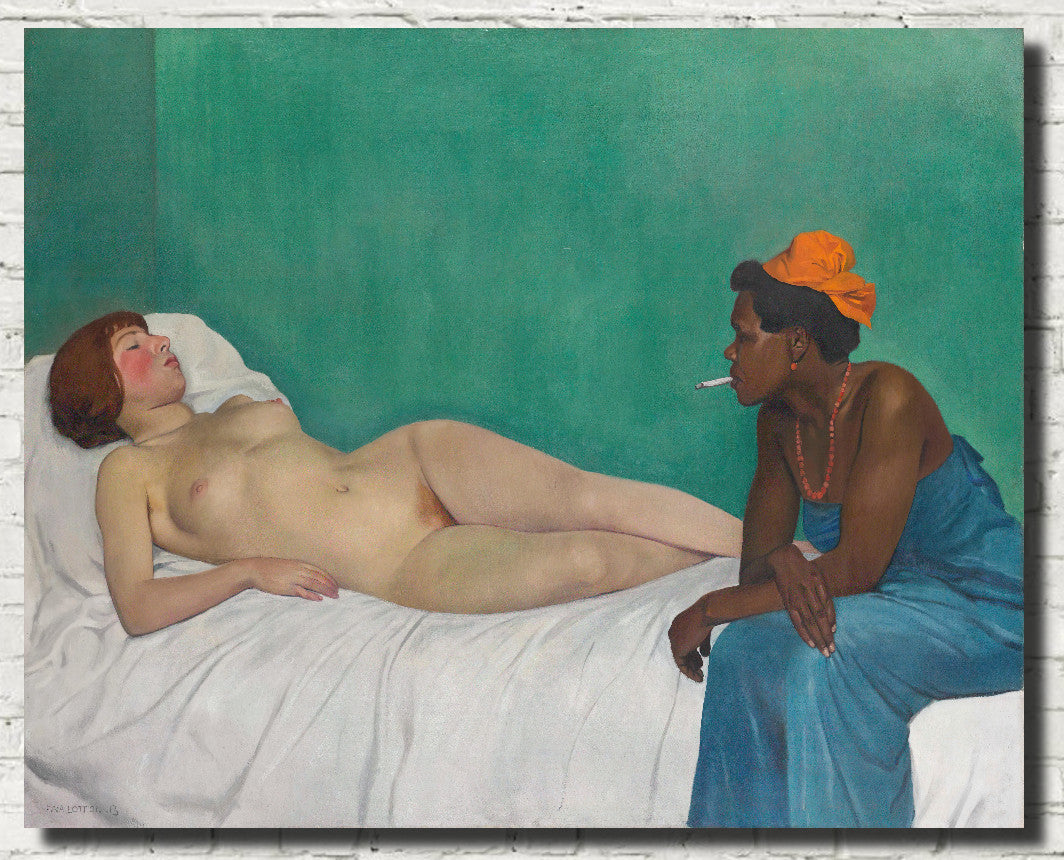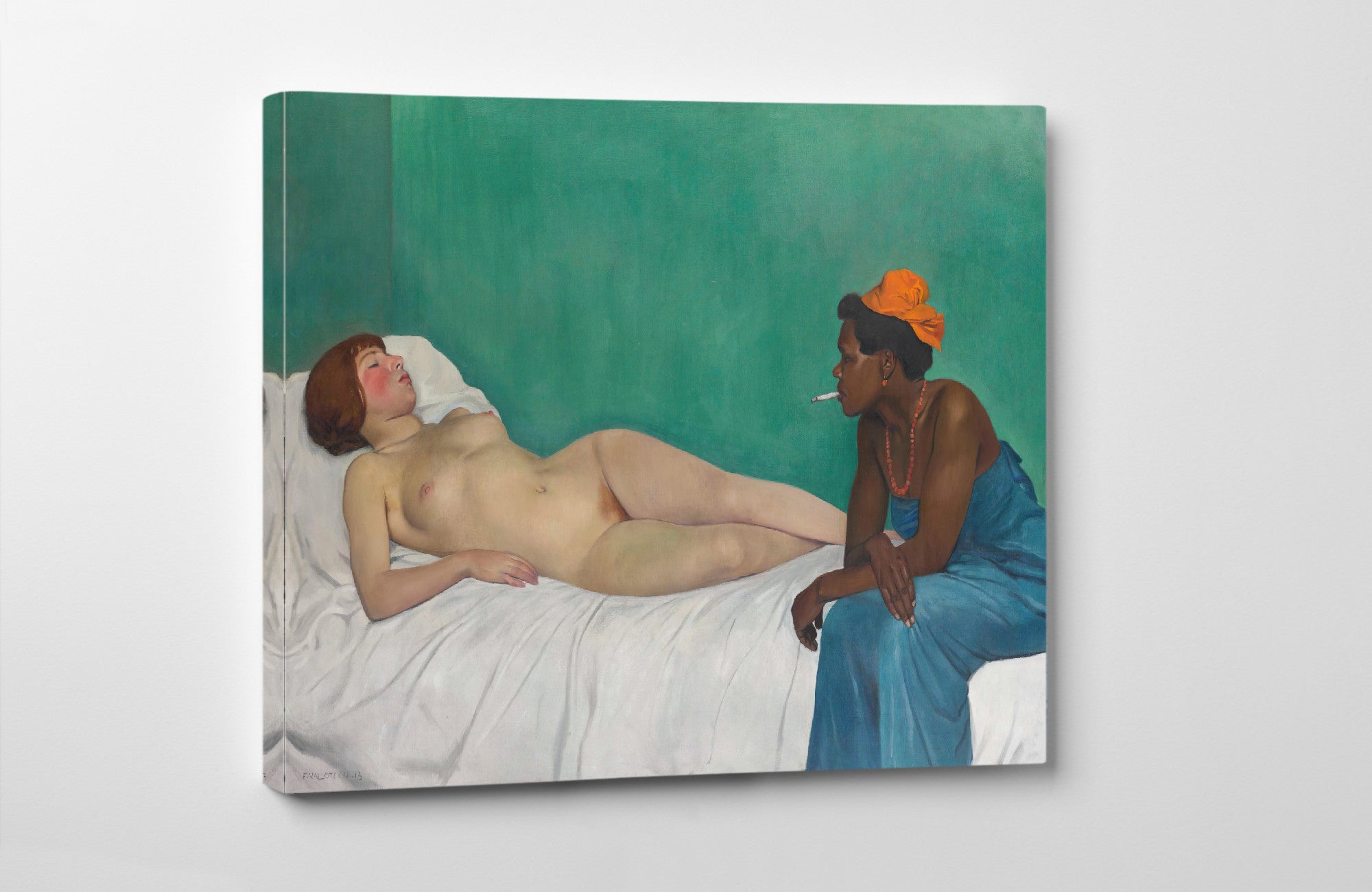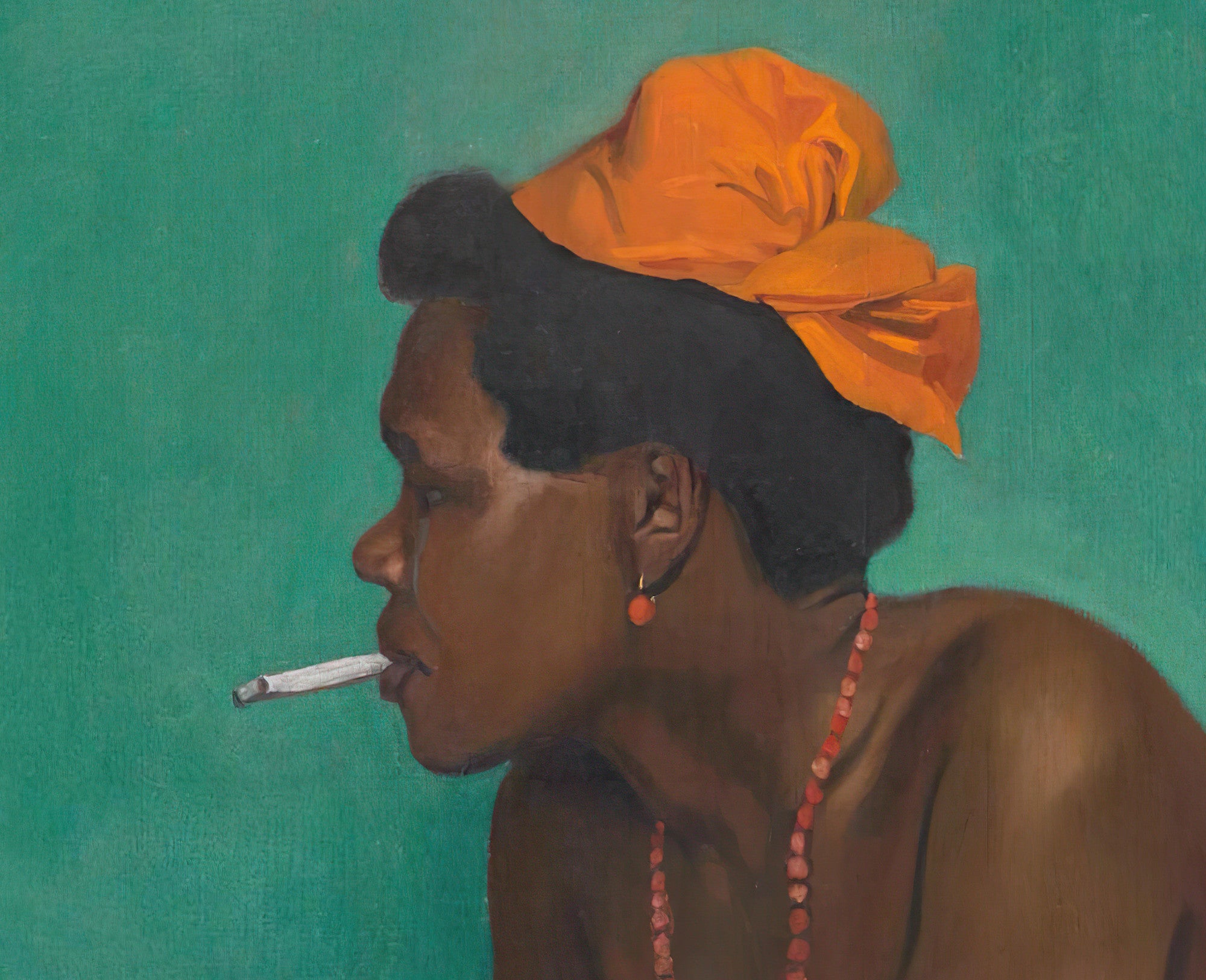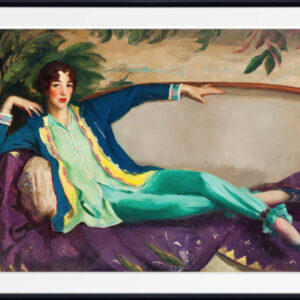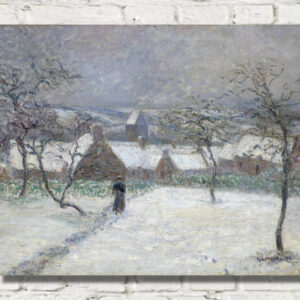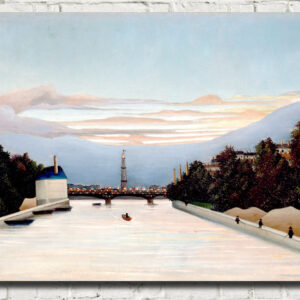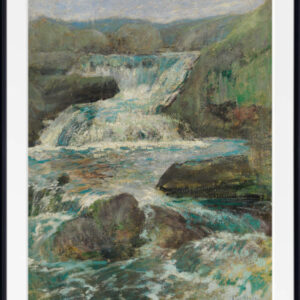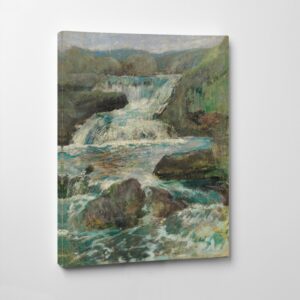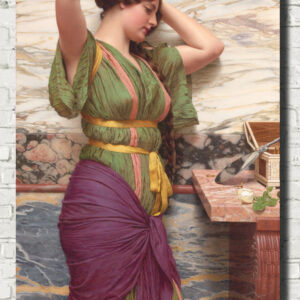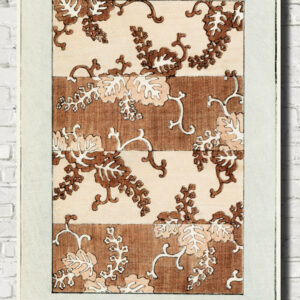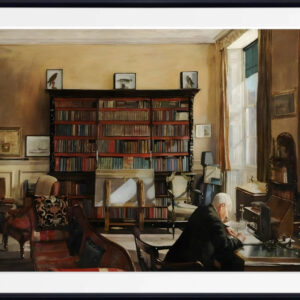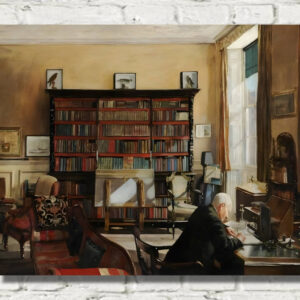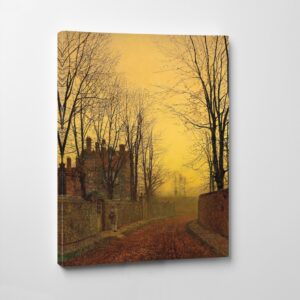The White and the Black, Félix Vallotton
Toward the right of the canvas, a black woman, clad in blue and smoking a cigarette, sits pensively on a bed. The object of her attention is a reclining white woman who is nude and—what exactly? Sleeping, maybe; posing, perhaps. (Her posture suggests a degree of self-awareness.) The title conjures a Whistlerian focus on color harmonies, and the image bears a knowing resemblance to Manet’s Olympia (1863). The relationship between the two women is provocative in its ambiguity. Was Vallotton, a committed leftist and anarchist sympathizer, commenting on class divide—exploring unstated tensions between mistress and servant? He didn’t leave a paper trail regarding intent.
As a feat of painting, The White and the Black owes nothing to Whistler, only nods to Manet, and strays far afield from Édouard Vuillard and Pierre Bonnard, both of whom Vallotton counted as friends. Paul Gauguin is the nearest correlative, partly for the confluence of eroticism and race, mostly for the elasticity and import given to color—the expanse of sea green serving as the backdrop, especially.
Félix Édouard Vallotton (1865 – 1925) was a Swiss and French painter and printmaker associated with the group of artists known as Les Nabis. He was an important figure in the development of the modern woodcut. He painted portraits, landscapes, nudes, still lifes, and other subjects in an unemotional, realistic style.
Available as a fine art print and as a stretched canvas panel (heavy fine art canvas stretched over 1.5 inch deep edge solid wood frame).
All prints are made using archival art stocks and UV pigment inks to give up to 200 years life. Prints are sold unframed and unmounted.


